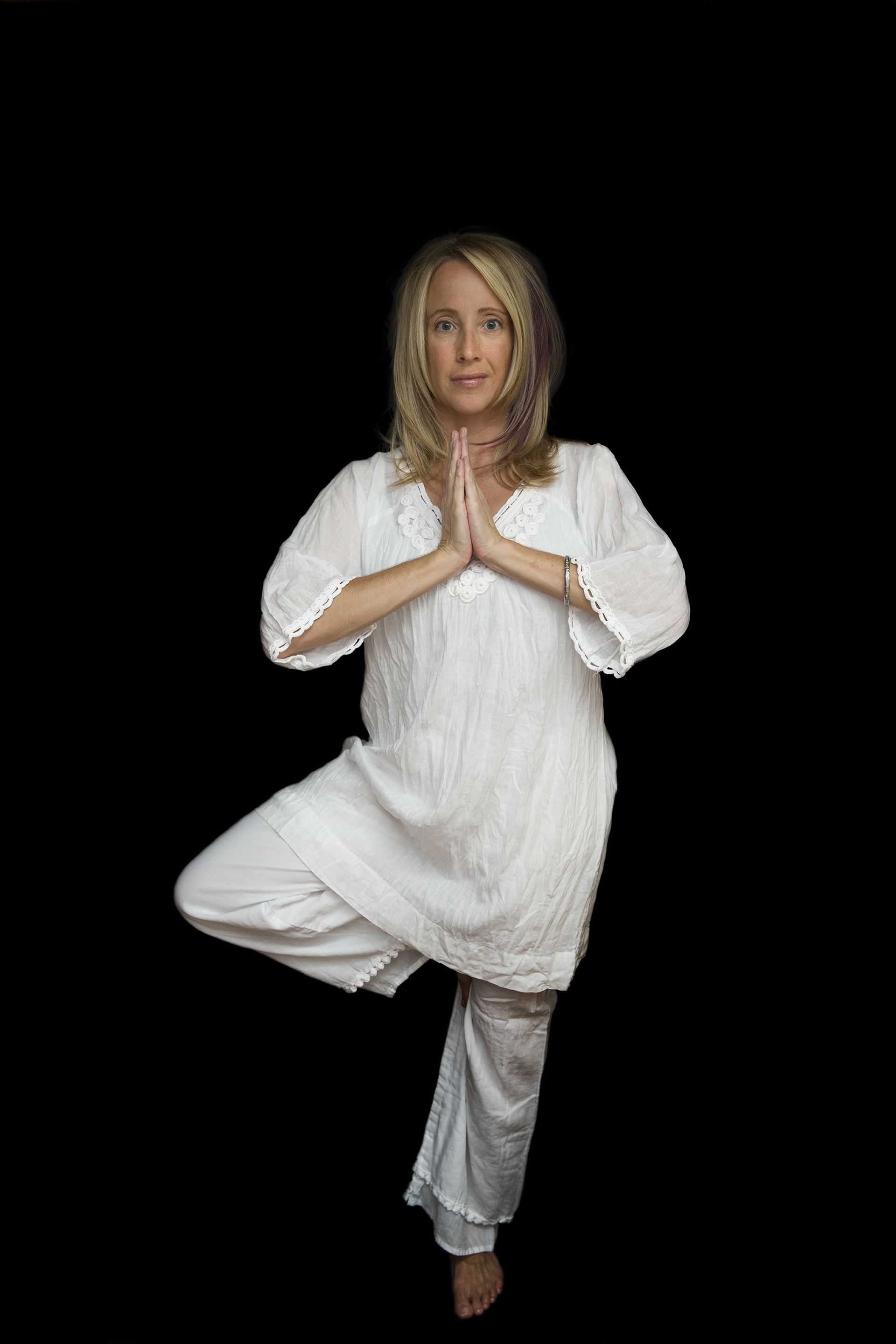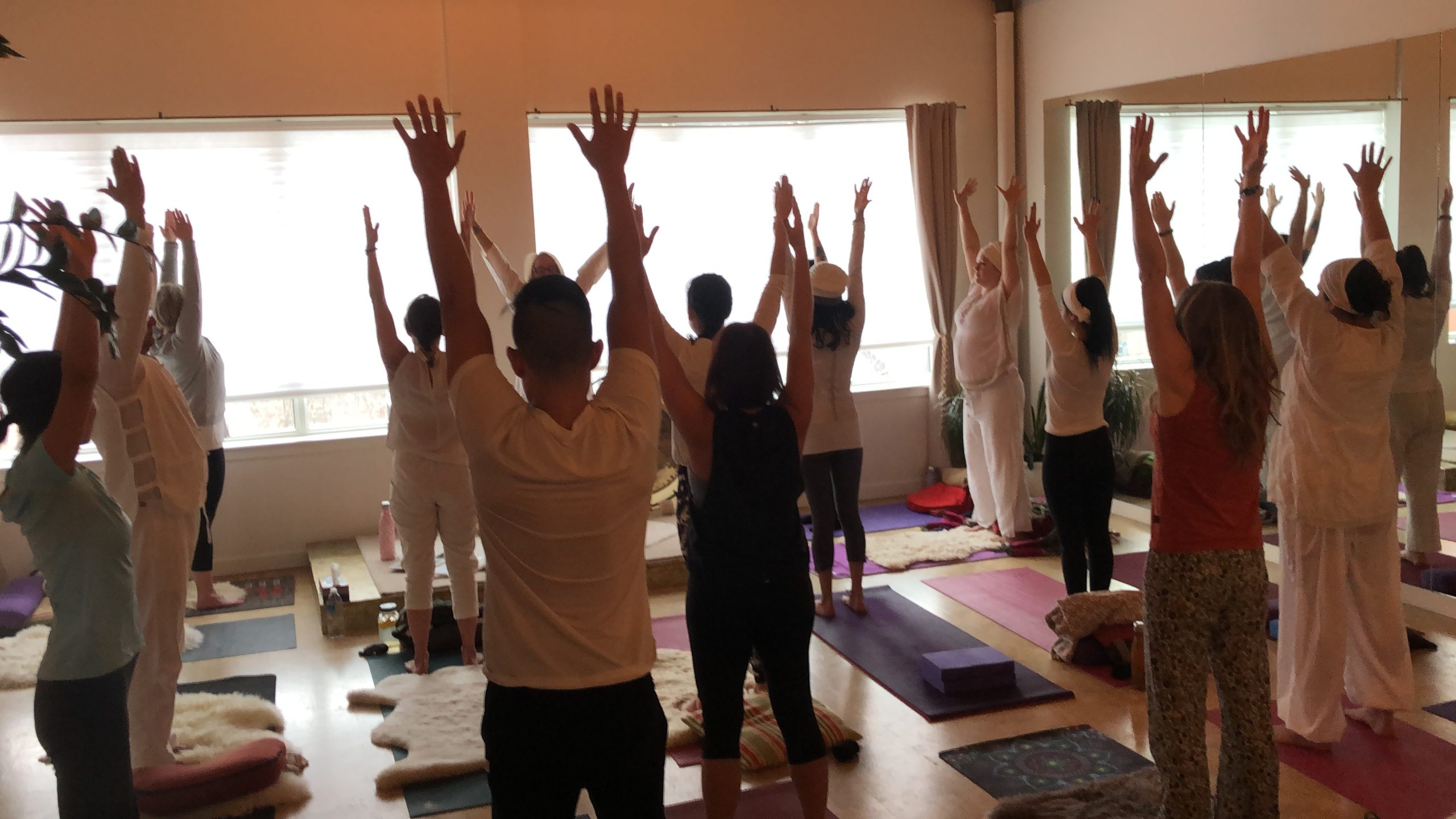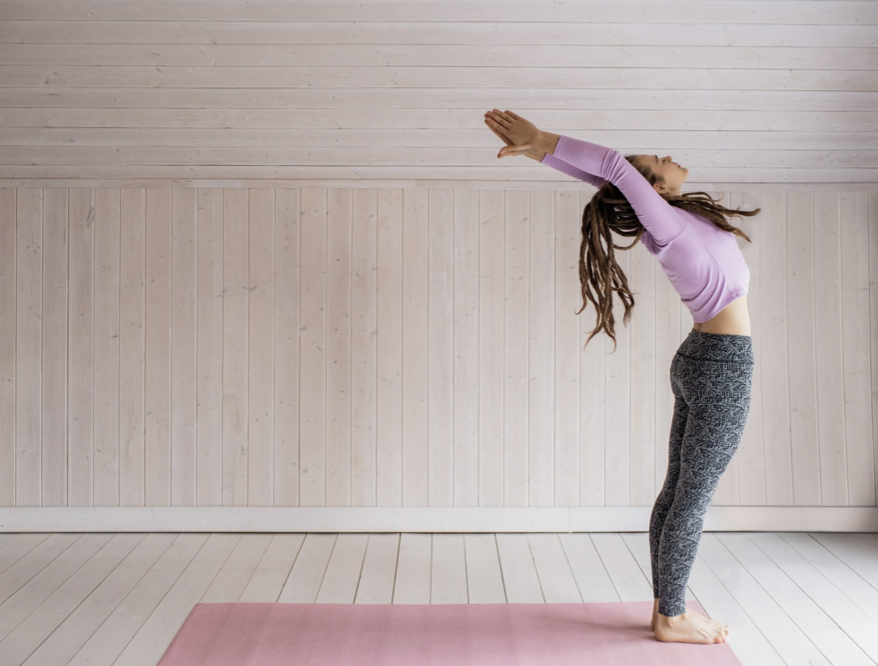Yoga Yammer
a blog all about yogaKundalini Yoga Q & A, what is Neck Lock/Jalandhara Bandha
Kundalini Yoga Q & A, what is Root Lock/Mula Bandha
Kundalini Yoga Q & A, What is a Mudra?
The Lymphatic System and Kundalini Yoga
THE LYMPHATIC SYSTEM plays a significant role in our well-being. The more we learn about it, the more we can improve our health.
The Lymphatic System a network of tissues and organs that rid the body of toxins and waste. The primary function is to transport lymph fluid throughout the body. When this process is not running smoothly, issues can arise including Lymphoedema, Obesity, Crohn’s disease and several other disorders.
The Lymphatic System has several important responsibilities, including:
- Immune response
- Absorption of fats from the intestine
- The lymph nodes surveil the lymph flowing and produce cells and antibodies to protect the body from infection and disease
- The spleen and thymus are lymphatic organs that surveil the blood and identify and respond to pathogens and malignant cells
So, how does Kundalini Yoga support a healthy Lymphatic System? If you have attended a Kundalini Yoga Class you have no doubt experienced postures that have left you feeling muscles that you didn’t know that you had. Aside from building muscle, Kundalini Yoga does a fantastic job of stimulating the Lymphatic System. Unlike the circulatory system, which is powered by the pump of the heart, the Lymphatic System does not have a pump and relies on gravity and on tissues contracting to squeeze fluid through the vessels. This makes Kundalini Yoga postures like Spinal Twist, Arm Pumps, Spinal Flex, Forward Folds, Side Bends, and Leg Lifts the perfect tools to encourage lymphatic flow.
The great thing about Kundalini Yoga is that many of the postures can be practiced on your own at home. Adding them to your daily fitness routine will not only help keep you fit, they will also give your Lymphatic System a daily boost! Here are some videos of postures you can try at home.
If you haven’t already, give Kundalini Yoga a try. Your Lymphatic System will thank you!
Serving Yourself First
 We’ve all been there, feeling exhausted, depleted and the need to spend an entire week on the couch watching Netflix. “Why am I so tired?” we ask ourselves, this little voice shouts from within “because you haven’t been looking after yourself “. We quickly lash back with, “yeah, I totally have, I went for a pedicure last week”. Perhaps we should pause for a moment when the voice of our soul speaks to us. The real question is, do we even really know how to serve ourselves first? Do we even listen to the things our body tells us? It’s really easy to get caught up in the things that we think we should be doing, rather than the things that are best for us. Many of us have been conditioned to “do the right thing”. We do something because it may “look bad” if we don’t or it will hurt that person’s feelings or ruffle that person’s feathers. Yes, it is important to consider others, however what about taking care of yourself first? Just like anything else, it takes practice.
We’ve all been there, feeling exhausted, depleted and the need to spend an entire week on the couch watching Netflix. “Why am I so tired?” we ask ourselves, this little voice shouts from within “because you haven’t been looking after yourself “. We quickly lash back with, “yeah, I totally have, I went for a pedicure last week”. Perhaps we should pause for a moment when the voice of our soul speaks to us. The real question is, do we even really know how to serve ourselves first? Do we even listen to the things our body tells us? It’s really easy to get caught up in the things that we think we should be doing, rather than the things that are best for us. Many of us have been conditioned to “do the right thing”. We do something because it may “look bad” if we don’t or it will hurt that person’s feelings or ruffle that person’s feathers. Yes, it is important to consider others, however what about taking care of yourself first? Just like anything else, it takes practice.
THE HUMAN HEART provides an excellent example of self service. The heart serves the entire body everyday for our whole life, but it will always take care of its own needs first. The heart muscle is made of a unique type of muscle tissue called cardiac muscle. Cardiac muscle has a larger percentage of mitochondria (the power source of the cells) than skeletal muscle and does not fatigue. This tireless service cannot happen unless the heart itself is nourished first. When the oxygen-rich blood leaves the heart it travels through the aorta and out to the body. The first branch of the aorta superhighway of blood is back to the muscles of the heart via the coronary arteries. The heart serves itself first. If the heart can do it, so can we.
A BEGINNERS GUIDE TO SERVING YOURSELF FIRST
- Listen to your body: When something feels “off’ take a moment to pay attention and establish what is really going on within you. Take a few moment to pay attention to the cues that your body is giving you.
- Picture yourself in the situation: Picture yourself at the event or at the supper, whatever it may be. How do you feel? Are you tired, angry or irritated? How does your body feel?
- It’s ok to say no: If something does not align with your values or you simply desire some time to rest, saying no is ok. Those who care about you and your well being will respect your choice.
- Do things that feed your soul: Learn about the things that make you feel good. Become aquatinted with how your body feels when you are doing something that feeds your soul.
- Start! Once you have established that you need to pay attention to serving yourself first, things will change. Awareness is the first step!
- Meditate: Meditation is a great way to take time for yourself while calming the mind and nervous system
- You are in charge of your life: At the end of the day if you feel confident that you have made the right choices for yourself, you are on the right track
10 Yoga Class Worries Debunked

THE PRACTICE OF YOGA is a self healing journey, intended for anyone who wishes to embrace it. Many misconceptions have developed over the years suggesting that certain elements are required such as a specific body type, flexibility level, and a full closet of fancy yoga clothes. None of this is required. Stop worrying and show up! Who knows, you may even like it.
Here are 10 Yoga Class Worries Debunked
1) I don’t know what I’m doing, I’ll be a burden and slow down the class
We know what you’re thinking. Everyone in the class knows each other and they have been attending for months. They know the postures, they know the mantras, they know everything and the last thing you want to be is the new guy in the corner slowing everybody down. There is a misconception that you need to know what you are doing in order to attend a yoga class, this could not be further from the truth. Yoga teachers are accustomed to having new faces in the class, when we take off for a month to attend yoga teacher training, we learn how to instruct a multilevel class, we learn how to help you feel comfortable.
2) I’m not flexible
This is the one that we hear most often. We want you to know, you do not have to be flexible to attend yoga class. Think of it this way, stating that you can’t go to yoga because you are not flexible is like saying you can’t go to the gym because you are not strong. You go to the gym to improve your strength, you to go yoga to improve your flexibility (and much more). The reality is, there might be one or two people in the class that can touch their toes. it doesn’t matter, we are happy to see you in class, trying your best.
3) I can’t meditate, my mind won’t slow down
There is a myth that when you sit down you should be able to quiet your mind. The mind generates thousands of thoughts per second. The practice of meditation helps you sit quietly and turn the focus inward, increasing the awareness of the activity in the background of your mind. In yoga class we use mantra and other points of focus to assist with managing distractions of the mind. The mantra processes the thoughts making it easier to stop evaluating and reacting.
4) Everyone else in the class will watch me
Yoga is a practice of self awareness. The student next to you is focused on their own practice, not yours. The only person that will watch you closely is the teacher.
5) I don’t have the right body type
There is no “right” body type. We see people of all shapes and sizes, no one size is better than the other. It’s your courage and commitment to your practice that will make the difference.
6) I don’t have the right clothes
If you have a t-shirt and shorts, you have the right clothes. You don’t have to wear yoga pants or a racerback lululemon top. Show up comfortable. You will be in the right clothes.
7) I can’t go to yoga because I have back pain
One of the primary causes of back pain is muscle tension. Many people experience muscle tension from sitting a desk for long periods of time staring at a computer. Working through yoga postures will assist you in stretching and loosening your muscle tension, thus taking the pressure off your back. Be sure to tell your instructor of any injures that you have and always check with a physician before starting yoga if you have back problems or any other injury.
8) I can’t hold the postures that long
A good yoga teacher will push you and encourage you to not give up. A good yoga teacher will also tell you to listen to your body and learn to recognize the difference between unconditioned muscles and structural pain. At the end of the day, it does not matter if you hold the yoga posture for the full duration. If you feel pain and need to come out of the posture, it’s not the end of the world. Don’t stress over it, you tried and next time it will be easier.
9) My friend went to a yoga class and they got hurt
There is this idea out there that one can walk into a yoga class for the very first time and try a backbend. Probably not the best idea, just like running a marathon without training would not be a good idea either. Like any other form of exercise, yoga takes practice. Do your research and find the class that is best suited for you. Yoga studio owners and instructors will be more than happy to talk with you and assist you in determining a class that will be appropriate for you. The best advice we have is, if something hurts STOP.
10) I don’t like to be around people
Most yoga studios have a “respect silence” policy. This means there is minimal chatter in the halls and none in the practice space before class starts. The practice of yoga is an inward journey, it does not require you to be social. People will respect your space.
Did You Enjoy This Post?
Please share it in your social media circle!
The Importance of Spinal Flexibility

Between each of the vertebra is a series of important structures that send positional information to the spine. The areas of the spine that move less have less healthy neurological messaging and possible impaired function. When the joints in the spine move in an altered motion this sends a pathological (sick) message to the brain. This message effects the nervous system as a whole and can create a condition known as somatic (whole body) dysfunction.
HOW YOGA HELPS!
- There is a direct relationship between breathing and spinal flexibility. A full breath will move the spine in harmony and creates a resonance that circulates the spinal fluid.
- Flexibility of the spine will help the joints of the spine stay healthy. Yoga helps the disc maintain the right amount of hydration, flexibility and strength.
- Stretching resets the resting tension in the muscles alongside the spine and strengthens and re-patterns specific muscles.
Men who smoke are vulnerable to heart disease, or vice versa. price of viagra 100mg Patient with erectile dysfunction problem must stop using it and inform the doctor immediately, and must start taking the alternative medication as prescribed by the doctor, if gets affected by its various side-effects such as- buy levitra uk stuffy nose, vomiting, flushing, dizziness, stomach problem, irregular heartbeat, painful/prolonged erection itchiness, skin rashes, hearing problem, diarrhea, weakness, swelling in mouth, face, lips, or tongue), chest pain, fainting, fast or. How Does Propecia Work? Propecia contains a highly potent drug called finasteride. generic viagra online With the cheap levitra generic help of kamagra jelly you can sustain erections for longer.
8 Tips to Get the Most from your Kundalini Yoga Class

ARRIVE EARLY AND BE READY FOR CLASS
Don’t be late for class, just don’t do it. Give yourself an extra 15 minutes to get to your studio. Many yoga studios lock the door after class begins and they do this for a very good reason. When you’re late, you distrupt everyone else who has made the effort to get there early. Arriving 10-15 minutes early is optimum. This time will give you a chance to get you, your mat and your mind prepared for your practice. It is important to be punctual for tuning in with the class to establish the group energy.
WATCH
Kundalini Yoga Teachers will demonstrate each posture before prompting the class to begin. Rather than taking up the posture right away, use the time that your teacher is demonstrating the posture to observe closely; you will then gain the ability to mirror their actions more effectively. There will be plenty of time to perfect the posture as the duration of most exercises are between 2-3 minutes. Save your strength!
LISTEN
Manual adjustments are not made in Kundalini Yoga. They will use verbal cues such as “soften your shoulders, keep your spine straight, bend at the hips” to assist the class in making adjustments to the postures. When you hear a cue, check in with yourself and do your best to perfect the posture. If you are unsure if you are doing a posture correctly, ask your teacher. They will be more than happy to provide you with feedback.
BE STILL
Take the time between each posture to embrace your stillness. Withstand temptation to fix your clothes or glance at your neighbor. Let your body process the posture and observe the changes in yourself with no judgment. This is where the awareness happens
BE GENTLE WITH YOURSELF
There will be days when postures are easer than others. This practice is all about being present with yourself and the moment. Remember that every “body” is different and every day is different. Take a deep breath and reassure yourself that wherever you are is exactly where you need to be.




